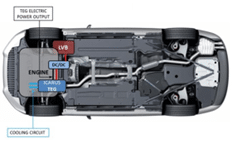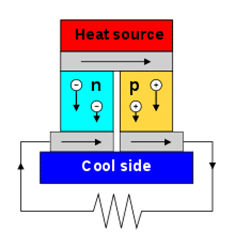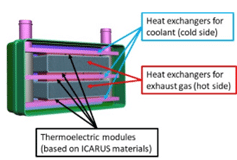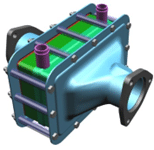Presentation of Thermoelectric generation using the Seebeck effect by Marelli
Presentation of Marelli Europe – Green Technology Solutions and its role in ICARUS
Marelli Europe – Green Technology Solutions (GTS) is located in Italy and is a large industry part of an international group that develops and produces automotive components. With more than 10 R&D Centers and over 40 000 employees, the group is present in 19 countries and supplies all the most important car makers in Europe, North and South America and Asia.
Marelli’s mission, as a worldwide automotive parts supplier, is to make its key technologies available to its final customers at an affordable price, by matching high quality and a competitive offer, technology and flexibility. In particular, Marelli GTS improves advanced systems to drastically cut-off vehicles pollutant emissions, to reduce fuel consumption by recovering wasted thermal energy and to manage and design vehicles noise according to legislation requirement and with customer brand identification.
In ICARUS, Marelli GTS acts as an end-user and its main role is to validate thermoelectric (TE) materials based on recycled silicon kerf. These TE materials, exploiting the Seebeck effect, directly convert the wasted thermal power of engine exhaust system into useful electric power to recharge vehicle battery. So Marelli is designing and will manufacture and test a TE generator based on Si-kerf materials that will be able to harvest exhaust gases wasted heat.
Thermoelectric generation
Seebeck effect: Principle
As mentioned above, the objective is to convert the wasted thermal power of engine exhaust system into useful electric power exploiting the Seebeck effect. Let’s see how this effect works. A thermoelectric device creates a voltage when there is a difference of temperature on each side:
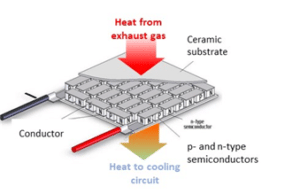
Customized Thermoelectric Generator
Starting from the specifications and properties of Si-kerf based materials, Marelli is designing a customized thermoelectric generator (TEG) optimizing heat exchangers geometry, thermal interfaces, fluid-dynamic and thermodynamic performances. Si-kerf based materials will be assembled in TE modules by a project partner and will be integrated by Marelli in the TEG. This generator will then be tested in real working conditions and its overall performance will be evaluated, comparing it with state of the art materials based on pure silicon.

 ICARUS’s first results
ICARUS’s first results
Halfway through the ICARUS project, the TEG was successfully designed to match Si-kerf based materials specifications/requirements. 3D computational fluid-dynamic simulations were run to predict system behavior and performances and to optimize subcomponents. All defined targets were matched.
Next steps
The next steps will consist in the integration of TE modules based on Si-kerf materials in the TEG and its testing and validation.


